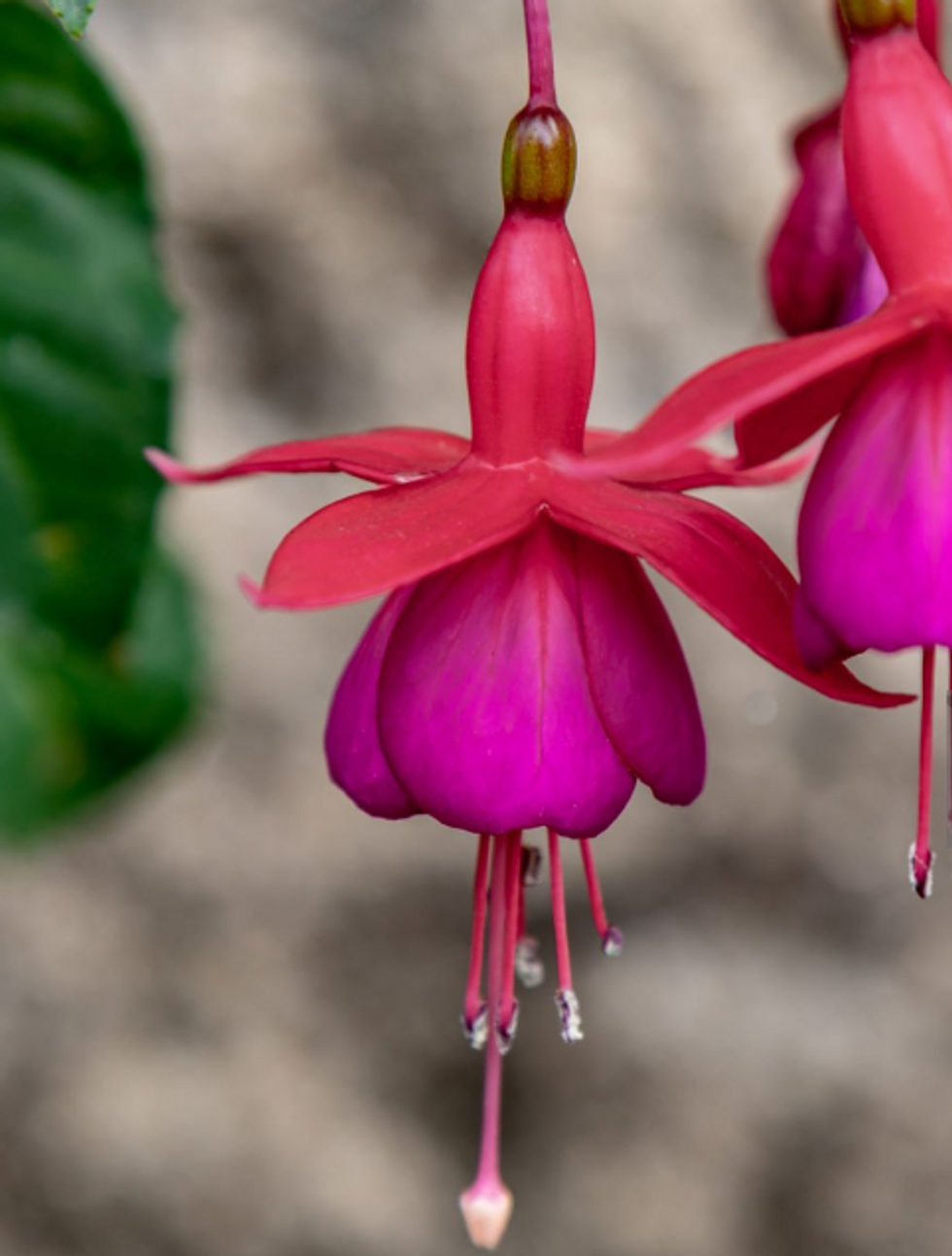Fuchsias require different care throughout the year
GETTY/PA
GB News is sharing everything you need to know to make the most out of your garden and houseplants. This week, see tips on growing, planting and caring for fuchsias
Don't Miss
Most Read
Trending on GB News
Fuchsias are fascinating, colourful plants that bloom in gardens in the summer months.
Experts have shared how to best care for these flowers in your outdoor space.
How to care for fuchsias
What you need to do to care for your plants changes depending on the time of year, as the weather will largely dictate this.
Gardening expert at MyJobQuote.co.uk, the UK’s leading trades matching site, Fiona Jenkins shares how to care for your plants, specifically what you should do in each season.

Fuchsias make a colourful addition to a garden
GETTY
The expert said this is the time to prune and mulch, as this will give the plants the best chance of survival.
She said: "In early spring, you can give your established hardy fuchsias a prune to remove dead and damaged stems. If stems are a bit overcrowded, don’t be afraid to cut branches back close to the ground.
"As spring progresses, you’ll find these will quickly regrow. Otherwise, just trim back last year’s growth to keep your plant tidy and neatly shaped.
"For tender varieties, simply pinch out the growing stems to boost the number of blooms they produce. To do this, use your fingers or a sharp knife to nip off the tips of the stems.
"But make sure that two sets of leaves remain on each stem as this is where new side shoots will grow from. This will keep your fuchsia looking thick and bushy with a nice, even display of flowers. Once the frosts have passed, you can move tender fuchsias from your greenhouse or conservatory into the garden.
"To help kickstart the growing season, it’s worthwhile adding a good layer of mulch or garden compost to the surface of your beds and pots.
"But leave a small gap around the bases of your fuchsias, so air can still circulate. You can also give your plants a feed with a balanced liquid fertiliser for an extra boost.
"Late spring is the best time to plant hardy fuchsia varieties. Fuchsias will grow in pretty much any soil type and for potting up, a multi-purpose compost is absolutely fine to use."
Another important tip for this time of year is to make sure the soil drains properly. Fiona continued: "Although fuchsias aren’t fussy about soil type, you do need to make sure it’s well-draining.
"So, for heavy clay soils, it’s crucial to dig in some horticultural grit before planting. If you’re planting in pots, you need to pick the type with drainage holes in the bottom. It’s a good idea to layer the bottom with small pebbles to ensure the roots don’t sit in water.
"As fuchsias grow quickly, it’s wise to go with a large container. For trailing varieties, a tall pot is the best option for showing off tumbling stems and flowers."
Finally, opt for a spot that gets the sun but has shelter as this will protect your flowers. The expert added: "To grow your fuchsias successfully, they need a sunny but sheltered spot to protect their delicate flowers. So, a patio or garden corner with dappled shade or a front border next to the house will work well.
"Tender fuchsias are best planted in pots, so it’s easy to move them into a greenhouse or conservatory over winter. If the weather is still frosty, hold off planting your tender fuchsias until early summer. After planting, water your fuchsias well and feed with a slow-release fertiliser."
Gardeners can relax more in the summer as fuchsias start to bloom. Ensure they are well-watered during the hot weather.
Fiona explained: "During the summer, young and potted fuchsias will need daily watering to keep the soil moist. If you struggle to water your plants regularly enough, you might find a drip-watering spike useful.
You can also feed your fuchsias regularly with liquid tomato or seaweed fertiliser during the summer to help them grow and flower.
"Summer is a good time to take softwood cuttings from tender fuchsias. This will give you a new supply of plants for the coming seasons. Pick healthy, young stems with no flower buds and make your cuts just below a leaf node.
LATEST DEVELOPMENTS

The plants create a colourful display in your garden
GETTY
"Aim for cutting lengths between 5cm and 10cm. Strip the leaves off each stem, leaving just the set at the tip. Dip the bases of the stems in rooting powder and plant your cuttings in a pot of moist and gritty potting compost.
"Cover the pot with a clear plastic bag or pop it in a propagator until roots form. Your cuttings can then be potted up individually."
In autumn and winter, complete the final jobs for the year and potentially move the plants into a greenhouse.
Fiona added: "In late autumn you can take hardwood cuttings from hardy fuchsias. You’ll need to choose woody rather than green stems for this. Cut lengths around 10cm to 15cm long, making sure there’s a leaf node at the base of each cutting as this is where the roots will form.
"Pop your cuttings in moist, gritty compost and keep your pot protected in a greenhouse or cold frame.
"Between late autumn and early winter, it’s time to move tender fuchsias into your greenhouse or conservatory to protect them from the frosty weather.
"You’ll also need to move cuttings to a frost-free space for protection. Over winter, make sure the pots of your tender fuchsias and cuttings remain moist but not wet."








